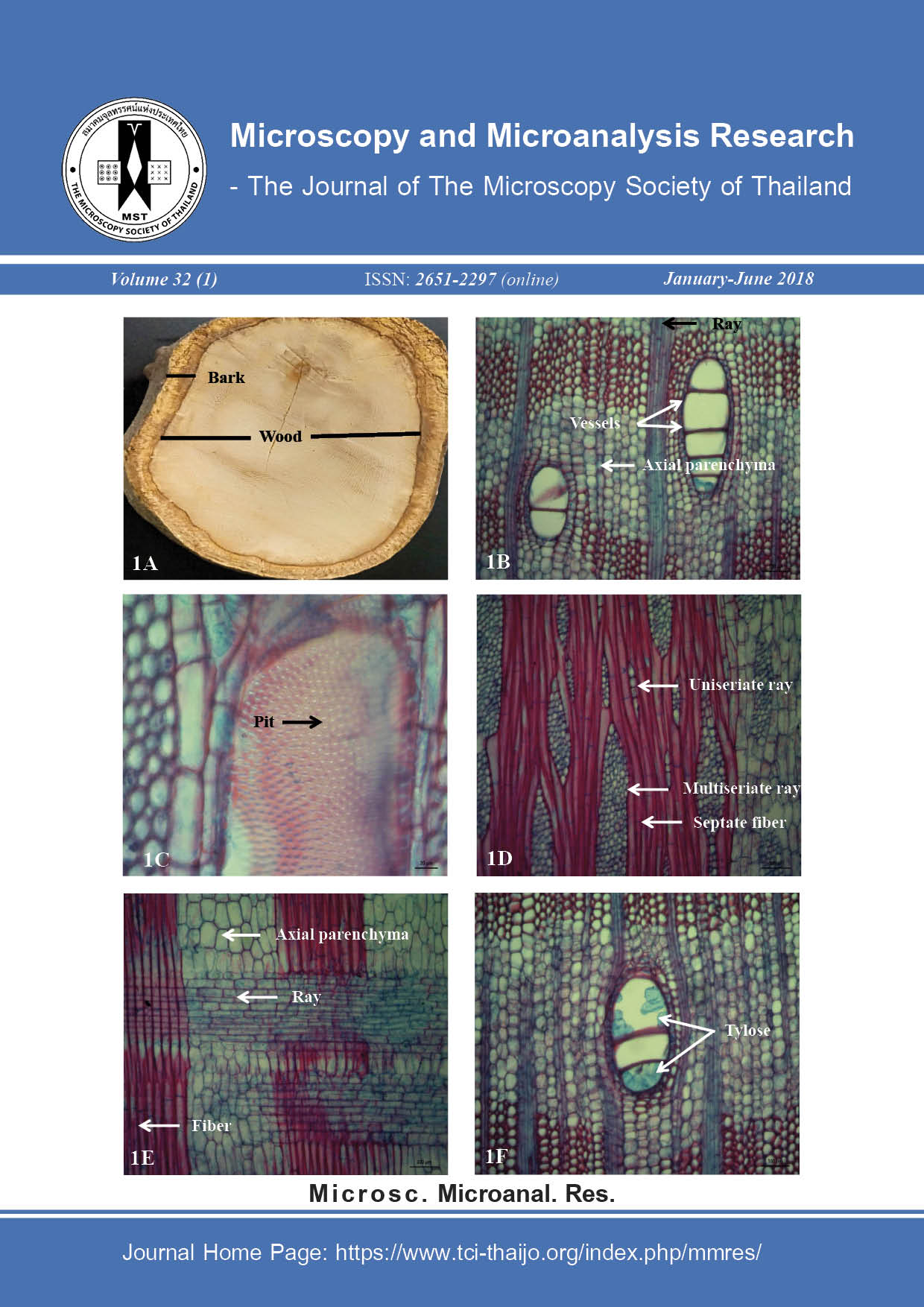Histology study of Siamese freshwater batfish (Oreoglanis siamensis)
Main Article Content
Abstract
Siamese freshwater batfish (Oreoglanis siamensis) is considered as endangered species due to the limited habitat such as highland running water sources of Inthanon mountain, Chiang Mai province, Thailand. Moreover, this fish is threatened by the environmental changes and human hunting for food source. Therefore, this fish is listed in the wildlife protection of Thailand. Based on those reason this fish must be enhanced for conservation. Unfortunately, the information of this fish is little such as the feature of habitat, food item, reproduction, and diseases. Basically, histological study makes us know the information of animal cell and tissue for baseline of further study. Hence, this study aims to provide the information of Siamese freshwater batfish histology. Thirty fish samples were collected from Huay Khang Chang, Inthanon mountain using scoop net in October 2017. The fish organ samples were fixed in 10% neutral buffer formalin, dehydrated throughout of alcohol series by automatic tissue processing machine, embedded in paraffin block, 5 micrometer thickness, and stained by Hematoxylin & Eosin. The sections were observed under the microscope (Drawell, Smart series) and recorded by the camera (Zeiss, Scope.A1 and Zeiss, Axiocam 305 color). The histology of nasal barbel, gills, skin, brain, heart, liver, kidney, intestine, and stomach of Siamese freshwater fish is documented for the first time in Thailand.
Article Details
References
[2] C. Vidthayanon, P. Saenjundaeng, H. H. Ng, Eight new species of the torrent catfish genus Oreoglanis (Teleostei: Sisoridae) from Thailand. Ichthyol. Explor. Fres., 2009, 20(2), 127.
[3] J. Chervinski, Environmental physiology of tilapias. In: Pullin, R S V and Lowe-McConnell R H (eds.), Proceedings, International Center for Living Aquatic Resources Management (ICLARM), Manila, Philippines, The Biology and Culture of Tilapias. 1982, (7), 119-128.
[4] G. L. Humason, Animal Tissue Techniques, 4th ed. W. H. Freeman and Company, San Francisco. 1979.
[5] D. M. Mokhtar, E. A. Abd-Elhafez. A. H. S. Hassan, A histological, histochemical and ultrastructural study on the fundic region of the stomach of Nile catfish (Clarias gariepinus). J. Cytol. Histol., 2015, 6(4), 1.
[6] A. R. Raji, E. Norouzi, Histological and histochemical study on the alimentary canal in Walking catfish (Claris batrachus) and piranha (Serrasalmus nattereri). Iran. J. Vet. Res., 2010. 11(3), 255-261.
[7] S. Chinabut, C. Limsuwan, P. Kitsawat, Histology of the walking catfish, Clarias batrachus, Department of Fisheries, 1991.
[8] A. M. Abdel-Moneim, N. M. Abou Shabana, S. E. M. Khadre M., H. H. Abdel-Kader, Physiological and histopathological effects in catfish (Clarias lazera) exposed to dyestuff and chemical wastewater. Int. J. Zool. Res, 2008, 4(4), 189-202.
[9] M. N. Fernandes, S. A. Perna-Martins, Epithelial gill cells in the armored catfish, Hypostomus cf. plecostomus (Loricariidae). Revista Brasileira de Biologia, 2001, 61(1), 69-78.
[10] R. J. F. Smith, Alarm signals in fishes, Fish. Biol. Fisher., 1992, 2(1), 33-63.
[11] G. Zaccone, P. L. Cascio, Studies on the structure and histochemistry of the epidermis in the marine catfish Plotosus lineatus (Thunberg, 1791) (Plotosidae, Pisces). Acta. Histochem., 1981, 69(1), 106-118.
[12] E. C. Joyce, G. B. Chapman, Fine structure of the nasal barbel of the channel catfish, Ictalurus punctatus. J. Morphol., 1978, 158(2), 109-153.


